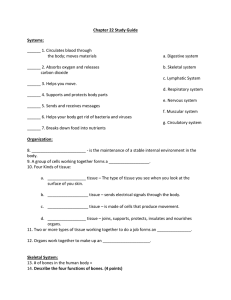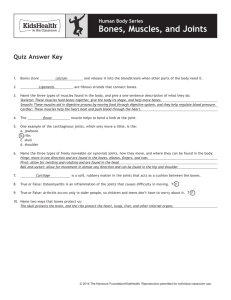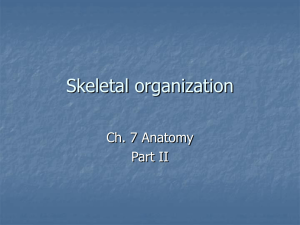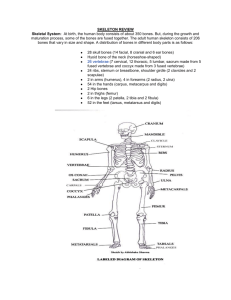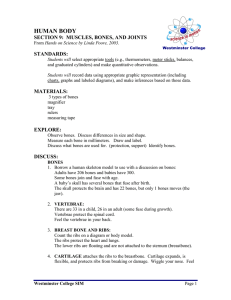SECTION 9: MUSCLES, BONES, AND JOINTS INTRODUCTION
advertisement
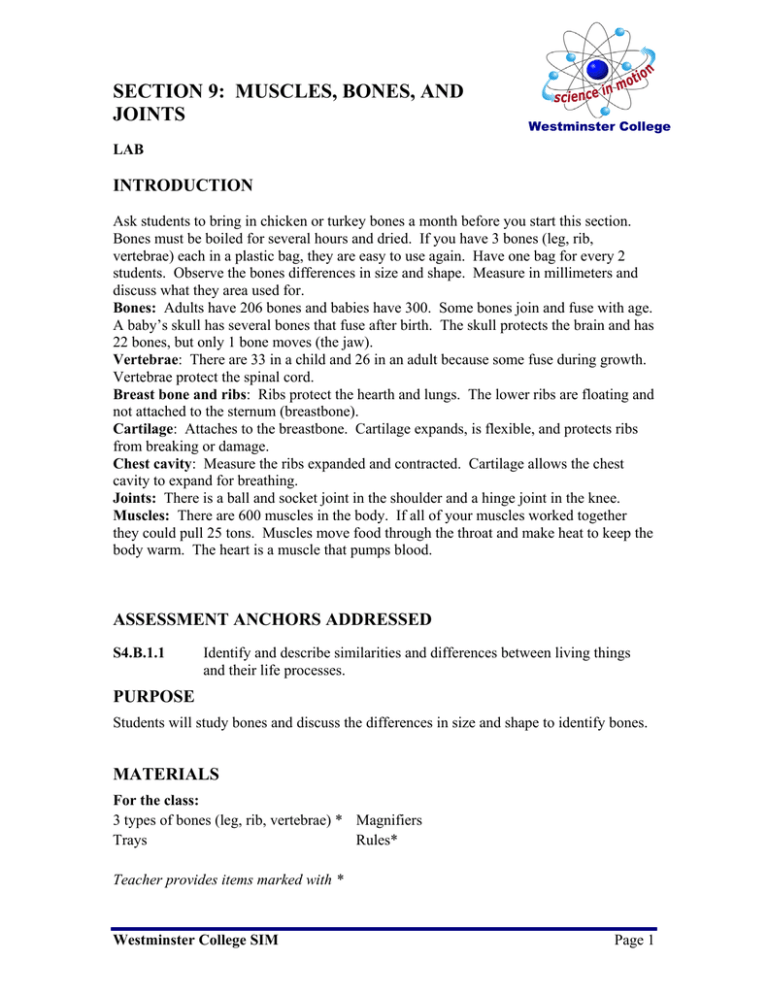
SECTION 9: MUSCLES, BONES, AND JOINTS Westminster College LAB INTRODUCTION Ask students to bring in chicken or turkey bones a month before you start this section. Bones must be boiled for several hours and dried. If you have 3 bones (leg, rib, vertebrae) each in a plastic bag, they are easy to use again. Have one bag for every 2 students. Observe the bones differences in size and shape. Measure in millimeters and discuss what they area used for. Bones: Adults have 206 bones and babies have 300. Some bones join and fuse with age. A baby’s skull has several bones that fuse after birth. The skull protects the brain and has 22 bones, but only 1 bone moves (the jaw). Vertebrae: There are 33 in a child and 26 in an adult because some fuse during growth. Vertebrae protect the spinal cord. Breast bone and ribs: Ribs protect the hearth and lungs. The lower ribs are floating and not attached to the sternum (breastbone). Cartilage: Attaches to the breastbone. Cartilage expands, is flexible, and protects ribs from breaking or damage. Chest cavity: Measure the ribs expanded and contracted. Cartilage allows the chest cavity to expand for breathing. Joints: There is a ball and socket joint in the shoulder and a hinge joint in the knee. Muscles: There are 600 muscles in the body. If all of your muscles worked together they could pull 25 tons. Muscles move food through the throat and make heat to keep the body warm. The heart is a muscle that pumps blood. ASSESSMENT ANCHORS ADDRESSED S4.B.1.1 Identify and describe similarities and differences between living things and their life processes. PURPOSE Students will study bones and discuss the differences in size and shape to identify bones. MATERIALS For the class: 3 types of bones (leg, rib, vertebrae) * Magnifiers Trays Rules* Teacher provides items marked with * Westminster College SIM Page 1


